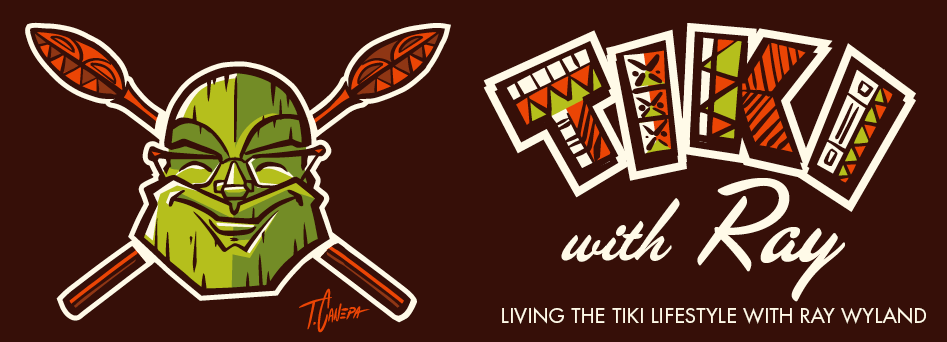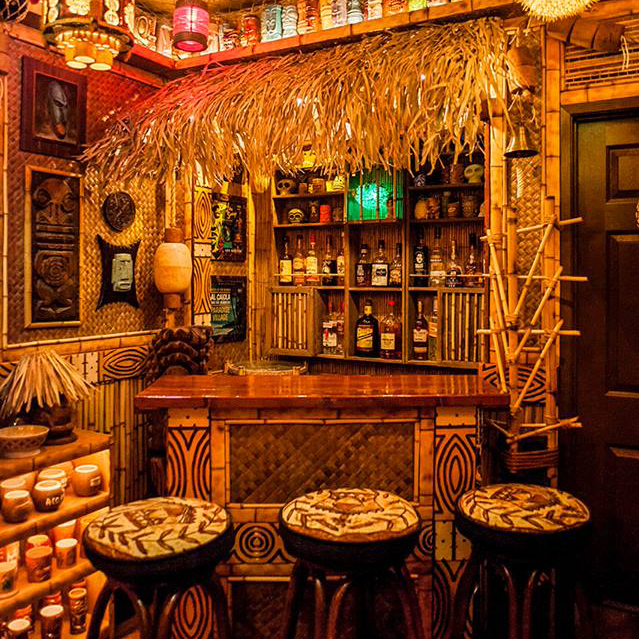
Adrian Eustaquio has been living the Tiki lifestyle for a long time—since the ’90s, to be exact. If anyone knows what Tiki is supposed to be, it’s Adrian. When it came time build his own bar, Adrian had a vision of what a proper Tiki bar should be and his place is truly outstanding. The Desert Oasis Room is so outstanding that it has been photographed for Hana Hou, which is Hawaiian Airlines own magazine! In fact, all the pictures used for this post are from professional photographers Kamala Kingsley and Mike Remmel. Here is Adrian’s story…
What brought you into the Tiki lifestyle and how long has it been part of your life?
Adrian- Having been born in Manila, PI, the tropical lifestyle is a part of my DNA and as such, I’ve always felt a connection to it. Back in 1986, my grandparents celebrated a 50th anniversary by renewing their vows with a church ceremony and wedding reception. That reception was at Don the Beachcomber in Marina del Rey. I remember wandering the restaurant marveling at environment and decor. It was this specific experience that sparked my interest in Tiki/Polynesian environments and theming.
In the beginning, I was sort of alone with this interest (so I thought), until about a decade later when I started seeing Tiki News in little independent shops. I learned that there were actually a small handful of Tiki historians that were writing about and documenting this lost fad. When I learned that the Polynesian pop era was largely started by Filipino immigrants, it came full circle for me. The 4 Filipinos at Don the Beachcomber, including pioneers such as Ray Buhen, Tony Ramos, Mariano Licuidine, Leon Lontoc, Dick Santiago and even Tiki carvers such as Andres Bumatay and Milan Guanko, all were Filipino immigrants basically creating what they know: a recreation of our tropical home. No wonder I always felt connected to it!
I tried looking for more online. In the early days of the internet, there was almost nothing, but I stumbled onto a Yahoo club back in 1999 or 2000 called Tiki Central and joined (I’m like member number 8). From there, I met more Tiki enthusiasts and started attending events. I started by going to the annual “Da Show” put on by Aloha Cruz, which is now defunct. I’ve also been to almost every Tiki Oasis (15 out of 16), every Tiki Caliente, traveled many times to the Hukilau, Mod Palm Springs, miscellaneous Tiki markets, and lots of shows. The list goes on and on.
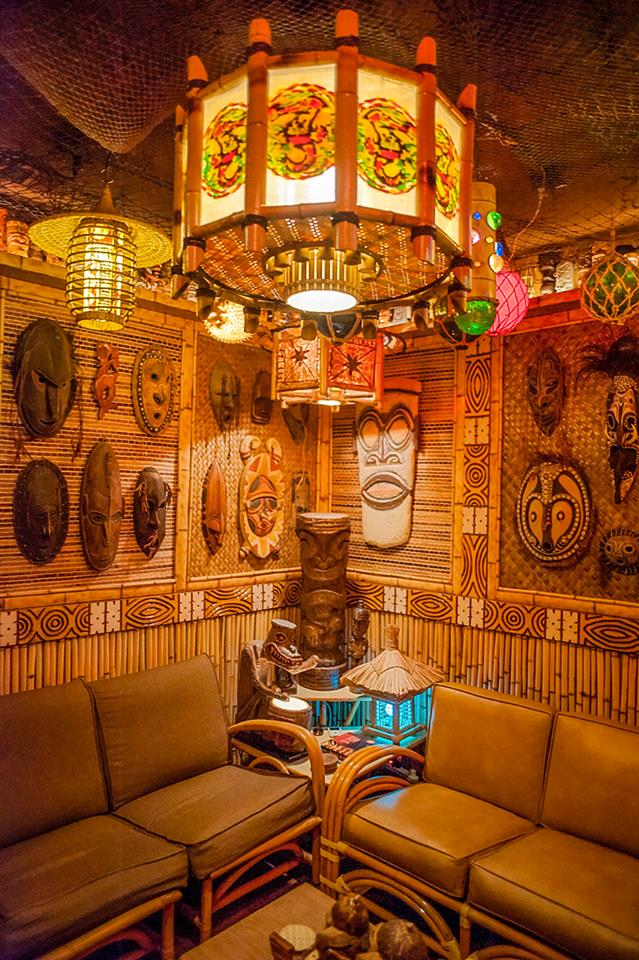
When and what made you decide to build your own Tiki bar?
Adrian- I’d been wanting to build my own Tiki bar since the mid ’90s, but things weren’t lining up for me back then. Whether it was being in a rental property, or dealing with space limitations, I just couldn’t do it until 2007. I built the first iteration of the Desert Oasis Room in my last house after collecting Tiki and Polynesian paraphernalia for almost 20 years. As you can imagine, the space was simply too small and most of my collection. About 75% of it stayed boxed up in storage. When I bought the house I live in now, part of the criteria was to find a home that had a space I could develop into the Desert Oasis Room. The room as you see it today was built in 2010 and took about 4 months to build.
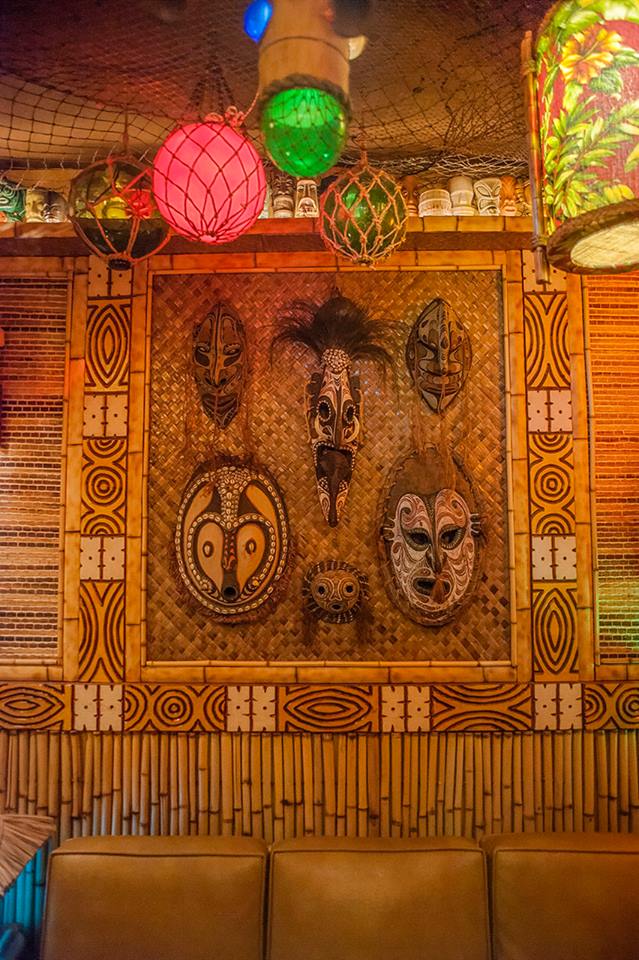
How did you come up with the name of your Tiki bar?
Adrian- The Desert Oasis Room is located in the Inland Empire of Southern California. The name comes from the image of crossing a desert and seeing a mirage, or “Desert Oasis.”
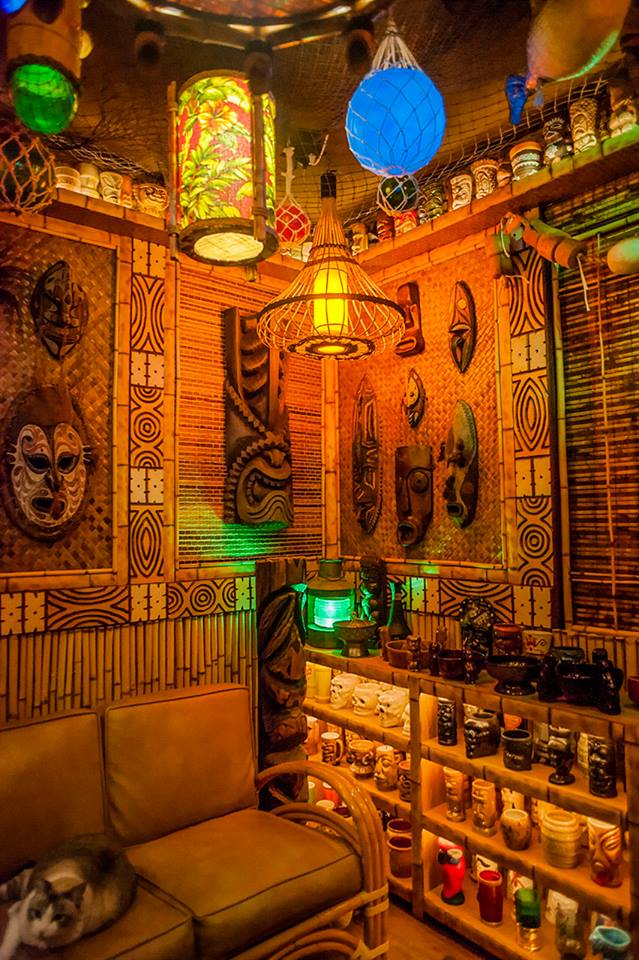
Can you give a little history of how it all came together?
Adrian- My father was a theme park architect for 3 decades. In a previous life, I was an architectural consultant with an emphasis in custom homes. I drew from both of those things when I designed the Desert Oasis Room. I don’t believe in “winging it” or “designing” on napkins. A quality build is well thought out and planned properly, so I drew out my concept and design prior to building. I started construction of the Desert Oasis Room about 2 weeks after moving into my home, installing infrastructure first (like electrical, plumbing, etc.), before wall treatments and flooring. Construction took about 4 months and was done 100% by me, including carving the moldings, building the awnings, building the mug and bottle shelving, bar construction, electrical installation, flooring installation: everything!
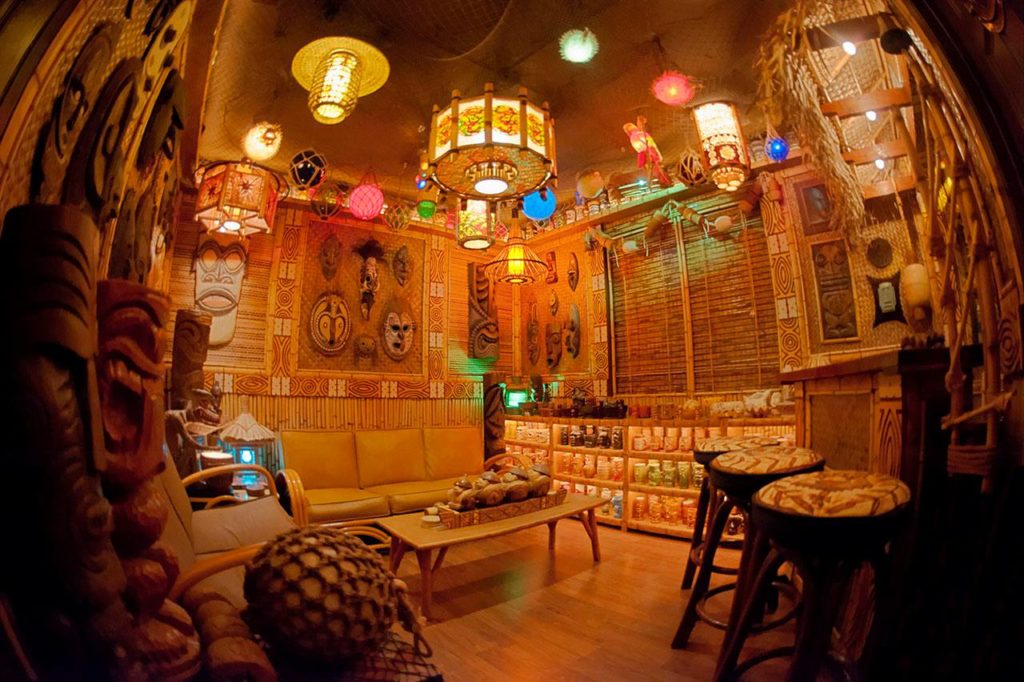
What is your favorite Tiki drink? What do you think makes the perfect cocktail?
Adrian- This is a tough one! I enjoy a really good, well-balanced cocktail, so as long as it’s done well. I suppose it depends on the mood I’m in at the moment. If I had to pick just one though, I’d probably pick the Ray’s Mistake at Tiki-Ti, named after it’s founder, Ray Buhen. It’s got a great story, history, and flavor. I don’t think I could ever get tired of that drink and I’ve probably drank over a thousand of them!
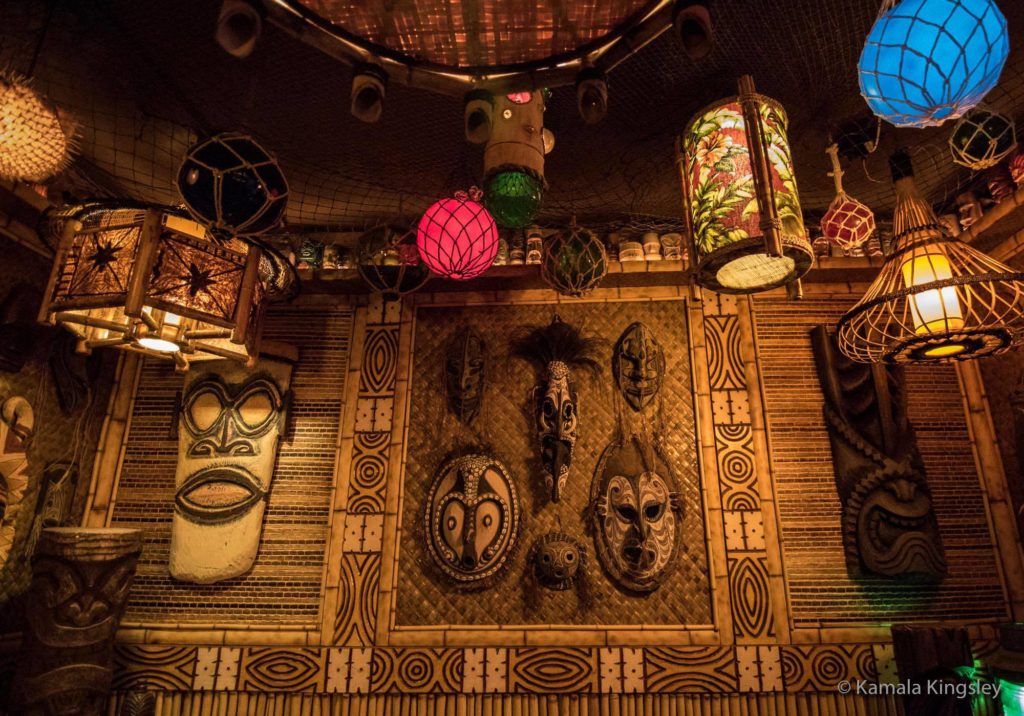
Not including your own, what is your favorite Tiki bar? Why?
Adrian- This is an easy one: the legendary Tiki-Ti on Sunset Boulevard. There are many reasons why I think it’s the best. First, it was founded by Ray Buhen, one of the original 4 Filipinos at Don the Beachcomber. His legacy is legendary: Don the Beachcomber, the Luau, Seven Seas, Christian’s Hut, the Dresden (among others), and eventually, the Tiki Ti. Second, it’s family owned and still run by his son and grandson, Mike and Mike Jr. Third, for the most part (barring ingredients that can no longer be obtained), the drinks are still being made the way Ray made them, so it’s almost like going back in time. Fourth, the place is a Los Angeles and Hollywood institution and is virtually unchanged: tobacco stained tapa, dusty decor, and vintage carvings. Fifth, the regulars here are true regulars. Some have been coming for 40 years. How many bars have regulars like that? I myself have been coming to Tiki Ti for 2 decades and sometimes still feel like a “newbie” when I’m hanging out with the older guys. It’s a great bar. So much so, that I drive 50 miles one-way to go there twice a week.
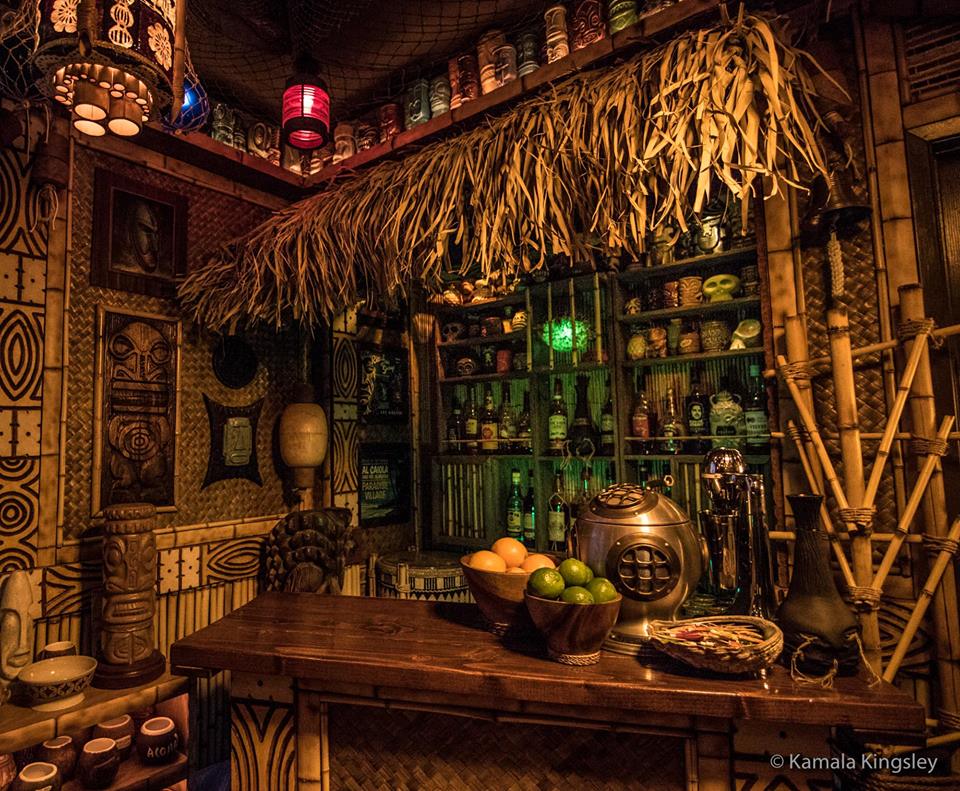
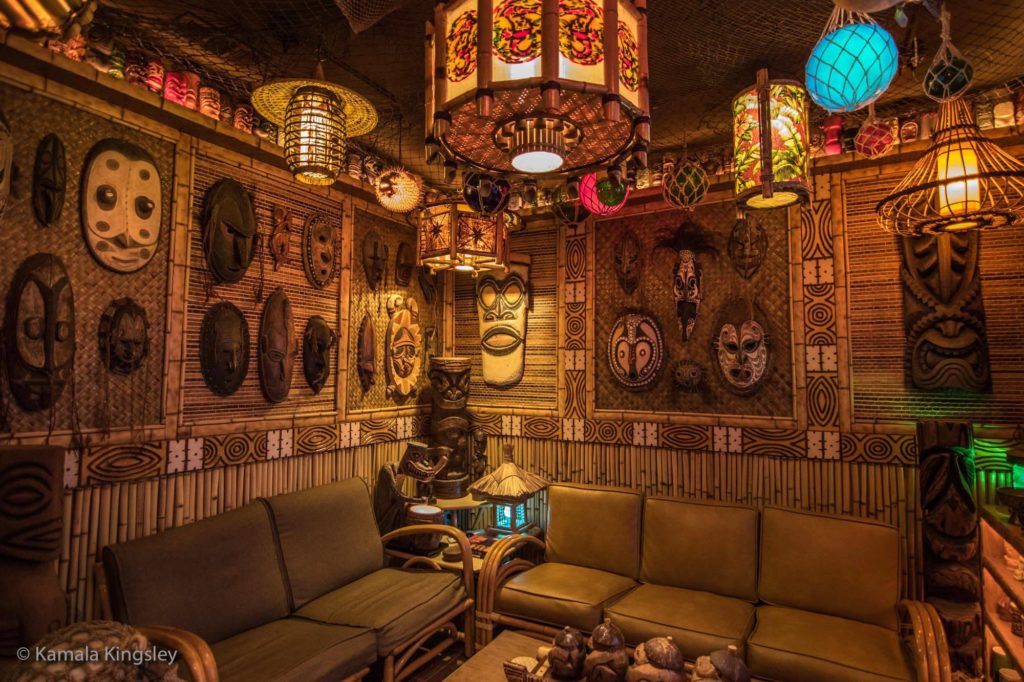
Outside of great drinks, what do you think are essential elements in creating the perfect Tiki environment?
Adrian- Well, Tiki is all about escapism. It’s that simple. So when one creates a bar, as long as they keep “escapism” on their mind, they can’t go wrong. What do I mean by that? Well, no windows, no TVs, no broadcast radio, no decor with advertising on it, etc. You want to leave all reminders of the modern world behind and feel like you’ve been transported to another place: a tropical paradise. This includes stimulating all of your senses including taste (proper prepared and garnished food and drink), smell (maybe the waft of fresh plumerias), sight (such as a wall or lighting effects), and sound (the proper soundtrack).
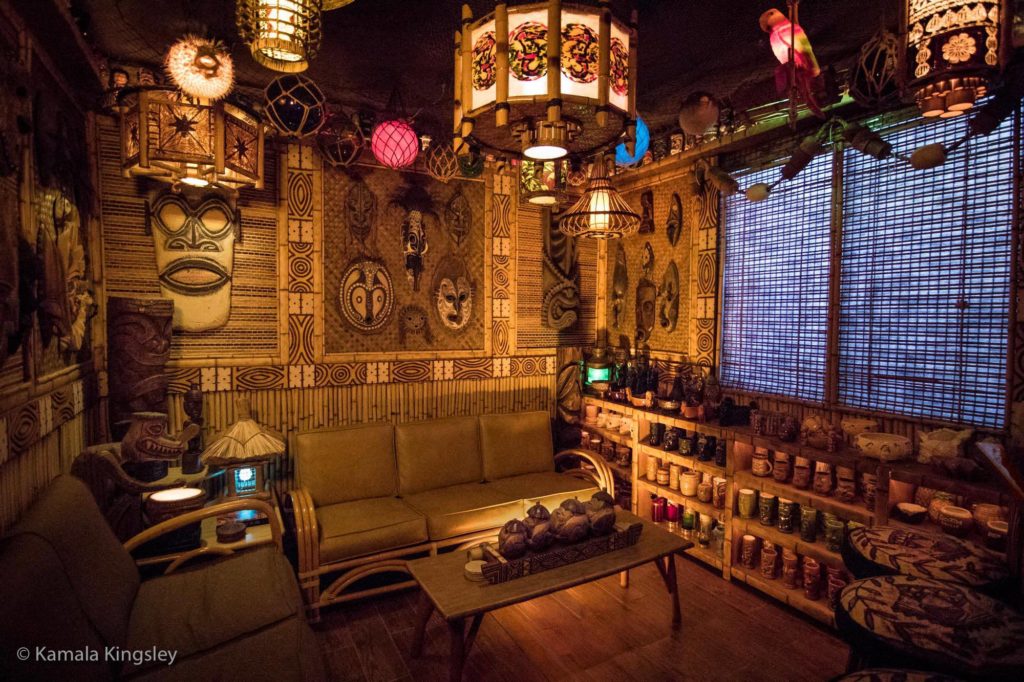
Do you feel that music has an important role in creating a great Tiki experience?
Adrian- Yes, very much so. Music is used in the media we consume all the time to dictate our moods! It’s no different in a Tiki environment. In the proper Tiki bar setting, I prefer the sounds of hapa haole or vintage exotica as the soundtrack. Artists like Alfred Apaka, Jack De Mello, Martin Denny, Les Baxter, Gene Rains, etc. Artists from the Golden Age of Polynesian pop because their sound takes you back to that era.
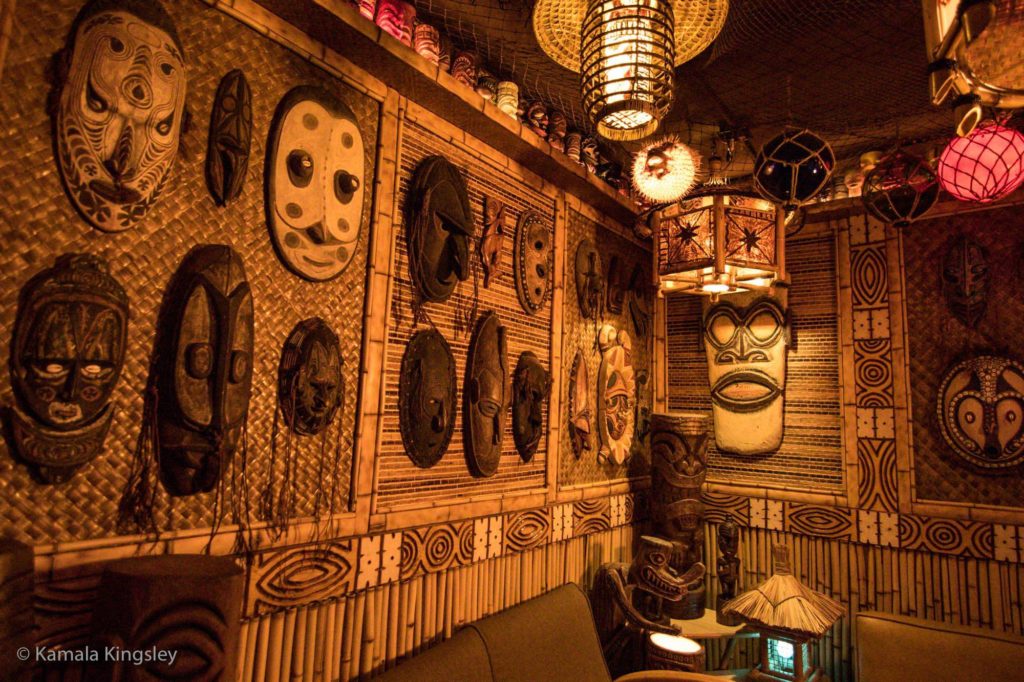
What does the future hold for you and your bar?
Adrian- Well I’ve started a podcast recently called Inside the Desert Oasis Room because I’m a big fan of podcasts having listened to hundreds, if not thousands of hours over the course of a decade. I always thought the most spirited and interesting conversation is born from being with friends around a table of drinks, so in my show I mix drinks from my bar and imbibe along with them! Having said that, I’ve been having lots of fun not only enjoying my guests’ (sometimes drunken) company, but also hearing stories that I think are absolutely entertaining! The podcast is mostly recorded in my Desert Oasis Room with an occasional field trip to other spectacular home bars. I plan to expand the audio sessions to video sessions in the near future as well once I get the hardware logistics worked out. Ultimately, I’d like to produce a webshow from the Desert Oasis Room with guests from the Tiki and cocktail community (and beyond).
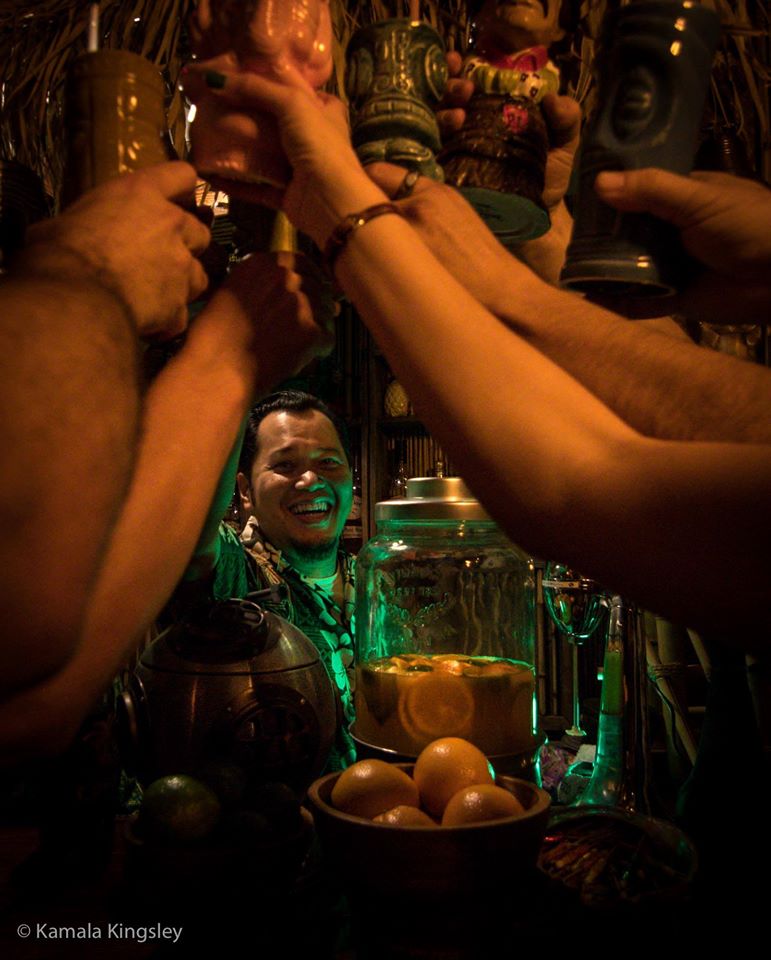
I had the honor to visit the Desert Oasis Room and sit down with Adrian to do a podcast! Click here to listen to this epic conversation!
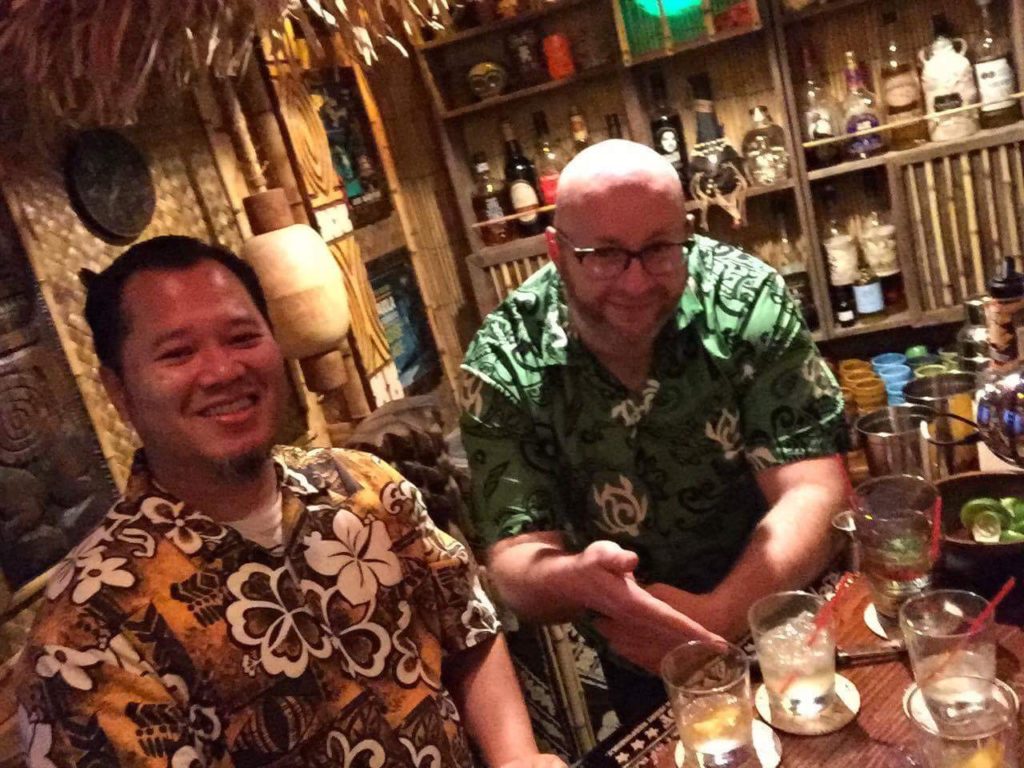
Check out this interview with Adrian on Lost In Paradise
Feel like you’re hanging out in the Desert Oasis Room by listening to The Desert Oasis Podcast.
